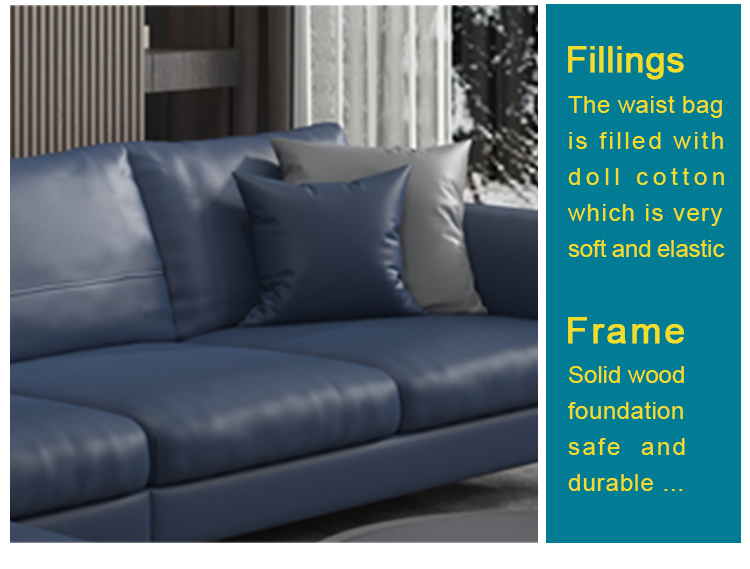Title: Transforming Leather Sofas: A Comprehensive Guide to Stain Removal and Color Changing
Leather sofas are a popular choice for their durability and elegance. However, they can be difficult to clean and maintain, especially when it comes to removing stains and changing the color. This comprehensive guide provides step-by-step instructions on how to effectively remove stains from leather sofas using common household items such as baking soda, vinegar, and alcohol. It also offers tips on how to change the color of leather sofas using dye or paint. The guide explains the importance of proper cleaning and maintenance to prolong the life of your leather sofa and prevent damage caused by improper care. With these techniques, you can transform your old and worn leather sofa into a stylish and inviting piece of furniture that will enhance any room in your home.
Introduction:
Leather sofas are a timeless and elegant addition to any living room. They offer both comfort and sophistication, making them a popular choice among homeowners. However, as with any furniture, they can become stained and worn over time. In this guide, we will discuss the best methods for stain removal and color changing on leather sofas. We will also provide tips on how to maintain the beauty of your leather furniture and extend its lifespan.
Section 1: Understanding Leather Stains and Colors
Before attempting to remove stains or change the color of your leather sofa, it is essential to understand the different types of stains and colors that can occur. Leather is a natural material that is susceptible to various types of stains, including oil-based foods, alcohol, ink, and sweat. These stains can discolor your leather sofa and make it look worn and old. Additionally, some leathers come with natural variations in color, which can range from light brown to dark brown.

Section 2: Types of Leather Stain Removers
There are several types of leather stain removers available on the market, each with its unique properties and effectiveness. Some common types include:
a) Chemical Cleaners: Chemical cleaners use strong detergents and solvents to break down stains and clean the leather surface. However, these cleaners can damage the leather's texture and cause it to lose its natural oils, leading to dryness and cracking.
b) Water-Based Cleaners: Water-based cleaners are less harsh than chemical cleaners but may not be effective against all types of stains. They are ideal for removing food stains, drink spills, and sweat marks from leather surfaces.
c) Oil-Based Cleaners: Oil-based cleaners are designed to penetrate deep into the leather's pores and dissolve stubborn stains. However, they can leave a residue on the surface, making the sofa appear dull and matte.
d) Ink and Pen Removers: Ink and penremovers contain chemicals that can lift ink from leather surfaces effectively. However, they may not be suitable for removing darker stains or those that have dried over time.
e) Bleaching Products: Bleaching products can lighten the color of your leather sofa, but they must be used cautiously as they can cause irreversible damage to the material. It is essential to test the bleaching product on an inconspicuous area first to ensure it does not damage the leather.

Section 3: How to Change the Color of Leather Sofas
If you want to change the color of your leather sofa, there are several options available to you. Some of the most popular methods include:
a) Dyeing: Dyeing involves applying a dye to the surface of your leather sofa using a specialized kit or by yourself. The process requires careful preparation and application to achieve optimal results. However, dying can be time-consuming and may not be suitable for delicate or high-end leather sofas.
b) Refinishing: Refinishing involves coating your leather sofa with a new layer of protective skin to restore its original appearance and extend its lifespan. This process requires professional assistance, but it can significantly improve the condition of your leather sofa.
c) Upholstery Fabric Replacement: If your leather sofa is beyond repair or you want to change its appearance entirely, you can consider replacing the upholstery fabric with a new material. There are numerous fabric options available in various colors and patterns, allowing you to create a unique look for your space.
Section 4: Maintenance Tips for Leather Sofas
Maintaining the beauty of your leather sofa is crucial in extending its lifespan and keeping it looking like new. Here are some tips on how to care for your leather furniture:

a) Vacuum Regularly: Vacuuming your leather sofa regularly helps remove dust, dirt, and debris that can accumulate on its surface over time. Be sure to use a vacuum cleaner with a soft brush attachment to avoid damaging the leather fibers.
b) Protect Against Sunlight: direct sunlight can cause leather to fade and crack over time. Consider placing your leather sofa in a shaded area or using a window shade to block out harmful UV rays. You can also invest in a quality leather protector spray to add an extra layer of protection.
c) Keep Moisture Levels Consistent: Leather is prone to drying out when exposed to moisture. To prevent cracking and shrinkage, keep humidity levels consistent in your living space. Avoid using wet wipes or cleaning solutions that contain water, as they can seep into the leather fibers and cause damage over time.
d) Clean Promptly: If you notice a stain or spill on your leather sofa, act quickly to clean it up before it sets in. Use a clean cloth soaked in cold water or a mild detergent solution to gently blot away the stain without rubbing or scrubbing the surface. Avoid using hot water or abrasive cleaners, as they can damage the leather fibers.
Articles related to the knowledge points of this article:
ADIDAS DOWN JACKETS: A Review of Quality, Style, and Functionality
Title: The Significance of Tie Patterns: A Comprehensive Guide
Title: Mastering the Art of Tie Knots: A Step-by-Step Guide to Tying a Perfect Tie



